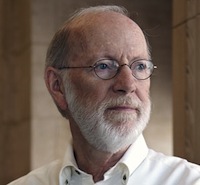Indeed, the house planning, design, and reconstruction was a major undertaking. After having written about energy efficiency, renewable energy, and green building for more than 35 years, there were countless ideas, materials, and innovative products I wanted to try out. This would be a once-in-a-lifetime opportunity to create a model
AAAS Speaks Out on Climate Change
Cover of the March 2014 AAAS report, What We Know A paper by the American Association for the Advancement of Science provides a superb, highly concise, summary of where we stand and what we can do about climate change Being a writer myself—and one who likes to convey complex concepts
New Public Safety Building in Salt Lake City a Model of Resilience
The Salt Lake City Public Safety Building is designed to maintain functionality during and following the most severe earthquake foreseen.
The Resilience Imperative in Canada
Adam Auer, the Director of Sustainability for the Cement Association of Canada, has just posted an excellent article, “The Resilience Imperative,” in ReNEW Canada: The Infrastructure Magazine. Adam interviewed me when he was writing the article, and I think he’s done an excellent job at capturing the salient issues. Even
Resilience as Means of Mitigating Climate Change
Resilience can be a motivation for taking actions that will not only make us and our families safer, but also help to mitigate climate change.
San Francisco Names a Chief Resilience Officer
“As CRO it will be my task to be a central point of contact for all our resiliency based plans and efforts that currently live in various departments.”
North Adams, Massachusetts and the Need for Resilience
In the past week, the city has suffered two major blows, plus a minor one.
Adaptation Stories
In collecting photos to use in the Resilient Design course I’m teaching right now at BAC, I came across a wonderful blog, Adaptation Stories, that’s worth spending some time with. Two young women, Allie Goldstein and Kirsten Howard, who had just completed their Masters studies at the University of Michigan’s
BAC course on Resilient Design
Alex Wilson taught an online, eight-week course, Resilient Design, at Boston Architectural College (BAC) January – March, 2014. This course will be offered at least annually through BAC’s Sustainable Design Institute, and it can be taken either as part of their continuing education program or one of their degree programs.
Creating a More Resilient Power Grid
The role of electrical storage in managing the output from wind and solar systems is important and will grow in significance as the percentage of our electricity supplied by renewables grows.
Resilient Design on the UN Agenda As It Prepares for Climate Change
The United Nations, climate change, and resilient design: a day at the U.N. World Habitat conference
RDI’s role in two recent reports
There’s a new blog from Urban Green on the reach that the NYC Buildings Resiliency Task Force report has had beyond New York City. RDI was involved with one of these new reports–for the City of Boston. You can access the Urban Green blog here, or download a PDF of
The New York City Buildings Resiliency Task Force Presents Recommendations
The report just released by the Buildings Resiliency Task Force presents 33 detailed recommendations for improving the resiliency of New York City buildings.
RDI’s Resilient Design Principles – Need Your Feedback
The Resilient Design Institute held a retreat of our Advisory Board in March and, among other issues, addressed how to describe resilience. Out of that discussion emerged the Resilient Design Principles, which I am posting here. Consider this a working draft that will evolve over time, but I wanted to
Public fruit trees gaining ground–in an underground sort of way
There’s a wonderful article in today’s New York Times about the subversive trend in urban agriculture to plant fruit trees in urban spaces. A loose-knit group called Fallen Fruit is planting fruit trees in the Los Angeles area–its bounty to be free for the taking. And up the coast in


























